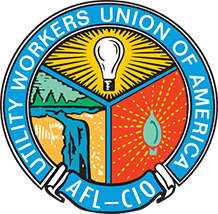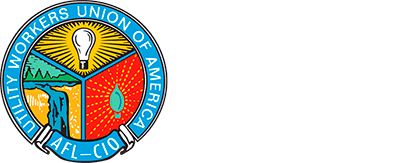 What is your new job?
What is your new job?
I am the Director of Renewable Energy. The roots of this position started with our work with the BlueGreen Alliance (BGA) in 2009 when Congress was considering carbon pricing legislation. At that time, President Langford appointed me to be the UWUA’s representative on the BGA’s Steering Committee. The premise of our work with the BGA is to balance worker and environmental interests by working together to solve today’s environmental challenges in ways that create and maintain quality jobs and build a fairer economy for workers. Someone shouldn’t have to trade a good union job for a “clean job.”
Why was the position of Director of Renewable Energy created?
Nationally, the electric utility sector has been, and continues to be, transformed by the expansion of natural gas generation and with more and more states developing renewable portfolio standards along with the falling costs of renewable energy technologies. This has irreversibly changed the nation’s energy mix.
The idea of creating this job was explored during the UWUA National Convention last July. Then in December, the National Officers held a strategy meeting to talk about what the future looks like for the UWUA and what policies and initiatives are needed to address industry changes to protect our members and grow our union. President Slevin decided to have someone focused on the growth of renewable energy, created a new position and made it official starting February 1.
The National Officers understand that as more of our fossil generation assets are taken offline and replaced with renewable energy technologies that we should take advantage of that and develop union growth in that sector. We’ve always represented workers in generation, whether that was old stoker fired boilers, unit boilers, or nuclear power plants. Renewable energy work should be our work as well.
What is the future of renewable energy?
The UWUA was founded as a Congress of Industrial Organization (CIO) chartered union. That means we have a history of organizing industry-wide as opposed to along strict trades line. The utility scale construction of renewable energy is already heavily unionized by the building trades. However, the operation and maintenance (O & M) side isn’t. So there are a lot of opportunities there to organize. We believe those jobs should be our jobs and we can build utility worker density across the spectrum of renewable energy.
We’ve always represented generation jobs and there’s no reason why we shouldn’t represent them in the renewable energy sector. It’s going to be different than traditional organizing because the assets are spread out. It’s going to take problem solving. It’s going to take new ways of communicating with people. But there is no reason why everybody in the country who is working class should not be represented by a union. And since our circle of influence is with our employers and our industry that’s our target.
Can you give us a concrete example of how we are addressing the transition to renewables?
Let’s take utility scale wind farms as an example. They are built under warranty by whoever constructs them. Just like a car, after they come off of warranty, it’s up to the owner to develop an operation and maintenance workforce. They might contract it out or bring it in house. Right now, because of the age of the fleet, there are lots of wind farms that are coming off of warranty and utility companies are looking at who is going to operate and maintain them. Now is really a good time for the UWUA to begin looking at who operates and maintains these assets and whether they are ripe for organizing.
There are lots of states where the UWUA has a presence and where UWUA represented employers have renewable energy assets, which means there are opportunities. Taking Michigan for example, it’s a state where we already represent O & M technicians at a wind farm. Our interest is to continue to grow that. The Michigan State Utility Workers Council clearly sees these opportunities. They are the first in the country to develop a DOL certified renewable energy specialist apprentice program that provides skills in solar, wind and battery storage.
A lot of my work right now is beginning to understand what the playing field looks like; where certain assets are, who owns those assets, whether or not they are unionized, part of a parent company, or whether they are under a purchase power agreement, understanding what state or federal legislation looks like, what direction states are heading and whether or not state or federal legislation might change the industry.
What do you tell UWUA members who are fearful that they might lose their jobs in the switch to renewables?
First and foremost, we support policies and believe in “all of the above technology” with respect to the nation’s energy mix, as well as responding to and reducing the effects of climate change. So, we are doing everything we can to make sure that coal assets, in particular, stay online for as long as they can. However, we have limited influence in ensuring that happens because we are not the owners. The market is driving a lot of what’s going on. Cheap natural gas and the fact that renewable costs are dropping are making heavy fixed, and centralized assets less economical.
You can’t match the jobs our members have in the fossil fuel and nuclear generation with jobs anywhere else. We have always advocated for our members to keep these jobs and, when that’s not possible, to make sure there is economic relief to those members and their communities to try to ensure a soft landing.
I don’t approach this job as though we are shifting away from coal or gas. The fact of the matter is, there are more renewables coming to market and renewables are one of the lowest organized sectors in our industry and we should be working to organize there. That’s not at the exclusion of coal plants, that’s on a parallel track.

